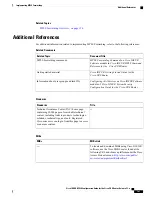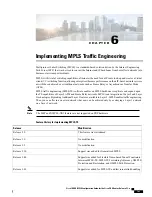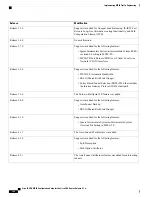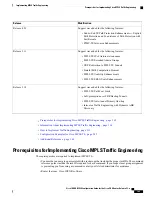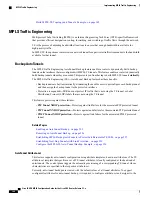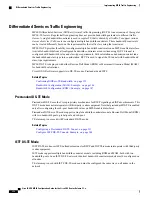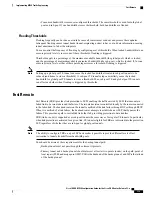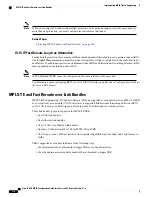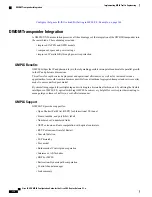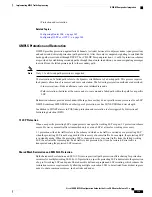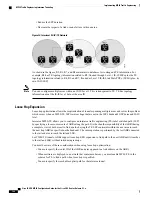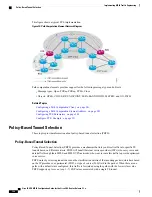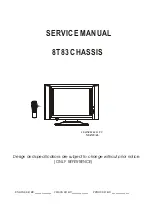
•
Consumed bandwidth crosses user-configured thresholds. The same threshold is used for both global
pool and sub-pool. If one bandwidth crosses the threshold, both bandwidths are flooded.
Flooding Thresholds
Flooding frequently can burden a network because all routers must send out and process these updates.
Infrequent flooding causes tunnel heads (tunnel-originating nodes) to have out-of-date information, causing
tunnel admission to fail at the midpoints.
You can control the frequency of flooding by configuring a set of thresholds. When locked bandwidth (at one
or more priority levels) crosses one of these thresholds, flooding is triggered.
Thresholds apply to a percentage of the maximum available bandwidth (the global pool), which is locked,
and the percentage of maximum available guaranteed bandwidth (the sub-pool), which is locked. If, for one
or more priority levels, either of these percentages crosses a threshold, flooding is triggered.
Setting up a global pool TE tunnel can cause the locked bandwidth allocated to sub-pool tunnels to be
reduced (and hence to cross a threshold). A sub-pool TE tunnel setup can similarly cause the locked
bandwidth for global pool TE tunnels to cross a threshold. Thus, sub-pool TE and global pool TE tunnels
can affect each other when flooding is triggered by thresholds.
Note
Fast Reroute
Fast Reroute (FRR) provides link protection to LSPs enabling the traffic carried by LSPs that encounter a
failed link to be rerouted around the failure. The reroute decision is controlled locally by the router connected
to the failed link. The headend router on the tunnel is notified of the link failure through IGP or through RSVP.
When it is notified of a link failure, the headend router attempts to establish a new LSP that bypasses the
failure. This provides a path to reestablish links that fail, providing protection to data transfer.
FRR (link or node) is supported over sub-pool tunnels the same way as for regular TE tunnels. In particular,
when link protection is activated for a given link, TE tunnels eligible for FRR are redirected into the protection
LSP, regardless of whether they are sub-pool or global pool tunnels.
The ability to configure FRR on a per-LSP basis makes it possible to provide different levels of fast
restoration to tunnels from different bandwidth pools.
Note
You should be aware of these requirements for the backup tunnel path:
•
Backup tunnel must not pass through the element it protects.
•
Primary tunnel and a backup tunnel should intersect at least at two points (nodes) on the path: point of
local repair (PLR) and merge point (MP). PLR is the headend of the backup tunnel, and MP is the tailend
of the backup tunnel.
Cisco IOS XR MPLS Configuration Guide for the Cisco CRS Router, Release 5.1.x
175
Implementing MPLS Traffic Engineering
Fast Reroute

